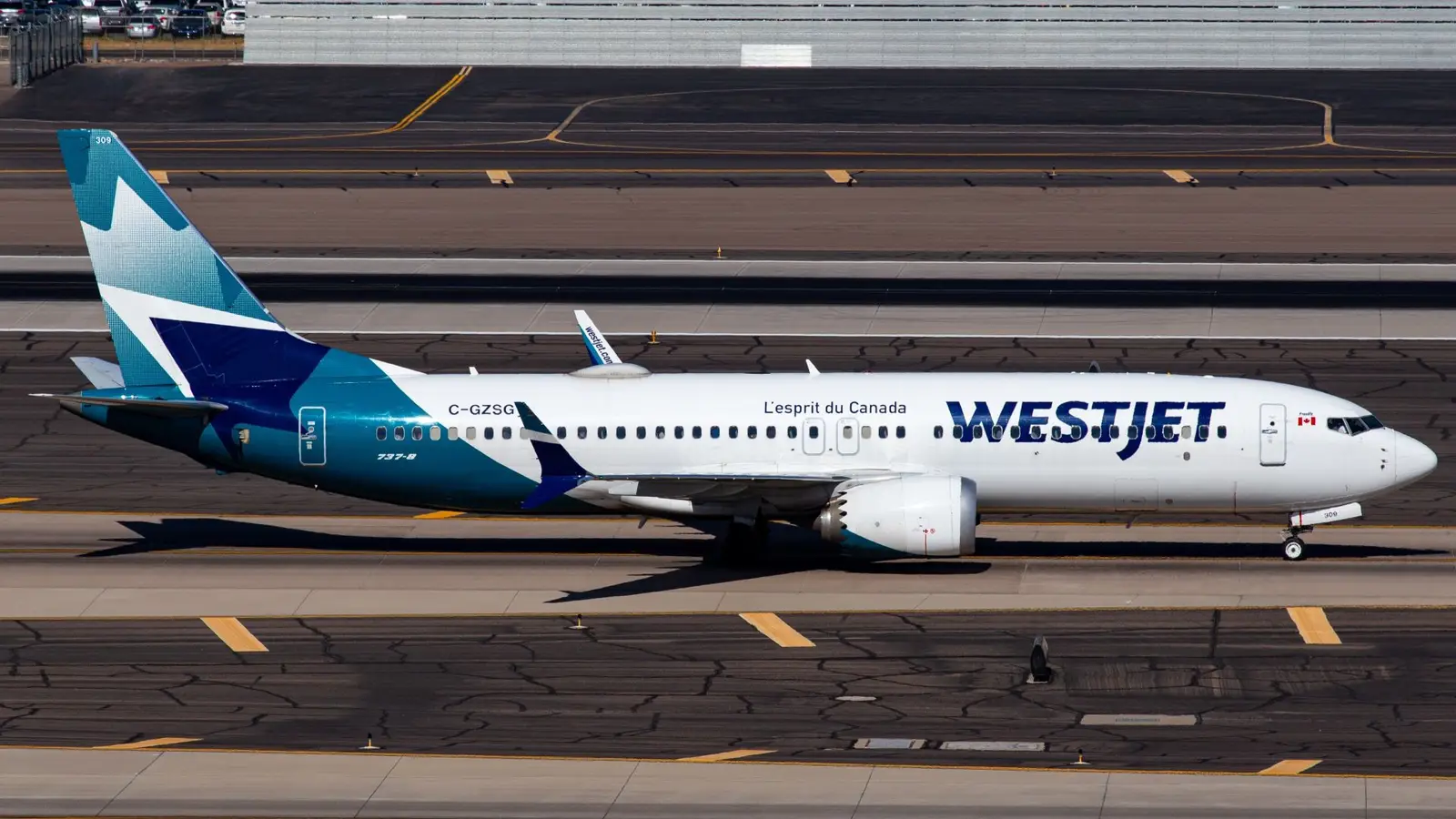
WestJetis currently rolling out refreshed cabin interiors on select Boeing 737 MAX 8 and 737-800 aircraft, introducing three distinct seating classes and a new fixed-recline economy layout designed to “preserve personal space.” The reconfiguration marks a shift from its current two-class and single-class configurations. The reconfigurations are currently underway and will enter service later this month.
WestJet says the move is part of its broader guest experience strategy, tying the cabin refresh to new amenities like in-seat power and Starlink WiFi (free for WestJet Rewards members). The airline frames the change as offering greater choice and comfort across different fare tiers while maintaining affordability.
Looking At The New WestJet Cabins
WestJet is installing new seats on 42 Boeing 737-800s and Boeing 737 MAX 8s. Currently, WestJet uses the Recaro BL3520 seats in economy and the Recaro CL4710 for Premium class on its 737 fleet. Now, WestJet is moving to Collins Aerospace for its narrowbody interiors, using the Collins Meridian for economy and the Collins MiQ for Premium.
The Collins MiQ is used on the Boeing 787 for premium economy, albielt with seatback screens. WestJet also works with Collins for its 787 business class seats, using the Collins Super Diamond. The 787 economy seats, meanwhile, are the Recaro CL3710. The new seats on the 737 will not have seatback screens, but they will feature power ports, phone/tablet holders, along with Starlink Wi-Fi on these new planes.
WestJet is formally creating Extended Comfort, an extra-legroom section comparable to American’s Main Cabin Extra, Delta’s Comfort+, and United’s Economy Plus. WestJet is installing 36 seats in Extended Comfort behind Premium class, but these seats are identical to the economy seats, other than the legroom. Rather uniquely, these seats won’t recline, a feature that is usually used by low-cost carriers.
Operational And Revenue Implications
By introducing multiple classes, WestJet can better segment pricing and upsell ancillary services. Passengers who value recline or extra legroom will be incentivized to purchase Premium or Extended Comfort options, leaving economy fares at a more basic level. WestJet is able to offer customers multiple options depending on their priorities.
By introducing slimmer seats and removing reclining mechanisms, WestJet can reduce maintenance and weight. The refreshed layout also includes power and connectivity improvements, which can be a revenue or loyalty driver. WestJet providing free StarLink Wi-Fi for WestJet Rewards members is a further loyalty driver.
While a fixed-recline design is generally seen as being less desirable, there is a benefit to removing recline from a passenger standpoint. Passengers often complain about the amount of space that reclining seats take away. Not only can this create a claustrophobic environment, but it can also lead to disputes between passengers. Pre-reclined seats remove this concern.
WestJet’s Strategy Moving Forward
WestJet was traditionally a budget airline, but as it’s grown, it’s moved closer to a legacy carrier in terms of its business model and product offering. This was particularly noticeable when the carrier began taking delivery of its Boeing 787 fleet, as these planes offer direct aisle access, lie-flat business class seats, and premium economy.
WestJet is Canada’s second-largest airline, and its strategy is somewhat similar to Alaska Airlines in the US. It has scale and a loyal following, along with comparatively low competition other than from Air Canada. Its primary hub is in Calgary, a smaller city in Canada, with a secondary hub in Toronto Pearson International Airport. As the carrier has grown to rival Air Canada, it’s making moves to become more similar.
Adding a dedicated Extended Comfort section increases premium seating options for passengers, and the Starlink Wi-Fi entices customers to join its loyalty program. However, removing reclining seats is an unusual move in that, while it does lower weight and reduce maintenance costs, it’s not typically seen as a premium feature. Instead, it’s ultra-low-cost carriers that install these seats, and it reflects that while WestJet is adding premium options, its still heavily focused on keeping costs low.